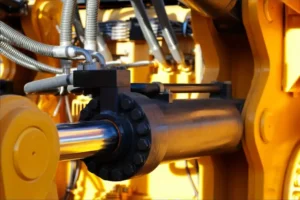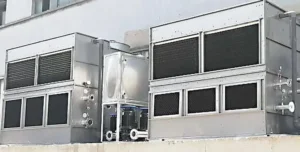In the application of induction furnaces, sensors and flowmeters are key components to ensure efficient, safe and high-quality operation.
They are responsible for monitoring and controlling various important operating parameters, which are essential for optimizing the smelting process, ensuring equipment safety and improving product quality.
Cooling water system monitoring
The induction furnace will generate a lot of heat energy during operation, which must be dissipated through an efficient cooling water system to protect the furnace body and induction coil from damage caused by overheating. Accurate monitoring of the cooling water system is essential.
- Flowmeter: used to monitor the flow of cooling water in real time to ensure that the cooling effect meets the requirements.
- Electromagnetic flowmeter: suitable for conductive liquids, with the advantages of no moving parts, not easy to wear, high measurement accuracy and insensitivity to dirt.
- Ultrasonic flowmeter: can be used for conductive and non-conductive liquids, adopts non-contact measurement, is easy to install, and does not cause additional pressure drop.
- Turbine flowmeter: mechanical flowmeter, which can provide higher measurement accuracy, but has certain requirements for the cleanliness of the fluid.
- Differential pressure flowmeter: Calculates flow rate by measuring the pressure difference before and after the throttling device in the pipeline.
- Temperature sensor: Monitors the temperature of cooling water entering and leaving the furnace body to evaluate cooling efficiency and detect potential overheating problems in time. Common types include:
- Thermocouples: Suitable for high temperature measurement, fast response speed and relatively low cost.
- Thermal resistors (RTDs): Provide high measurement accuracy and good stability, but relatively slow response speed.
- Pressure sensor: Used to monitor the pressure of the cooling water system to prevent excessive or low pressure and ensure that the system operates within a safe range.
- Leakage sensor: Installed in key parts of the cooling system, once a cooling water leak is detected, it can issue an alarm in time to prevent water from seeping into the furnace body and causing potential explosions and other dangerous accidents.
Hydraulic system monitoring, suitable for furnaces with hydraulic operation
For some induction furnaces that use hydraulic systems for furnace tilting, furnace cover opening and closing, atbp., it is crucial to accurately control the pressure and flow of the hydraulic system. This requires the support of the following sensors and flowmeters.
- Pressure sensor: monitors the pressure of the hydraulic system in real time to ensure that the operation is carried out within a safe range and achieves precise force control.
- Flowmeter: monitors the flow of hydraulic oil to accurately control the movement speed of the actuator. Common types include gear flowmeters and vane flowmeters.
Gas flow monitoring, suitable for processes using protective atmosphere or combustion gas
In the smelting process of some induction furnaces, it may be necessary to use a protective atmosphere to prevent oxidation, or use combustion gas for auxiliary heating. Accurate control of the flow of these gases is essential to maintain process stability and ensure the safety of operation.
- Thermal gas mass flowmeter: directly measures the mass flow of gas, is insensitive to changes in temperature and pressure, and has high measurement accuracy.
- Vortex flowmeter: suitable for a variety of gases, with a relatively simple structure and high reliability.
- Differential pressure flowmeter: calculates the flow by measuring the pressure difference generated before and after the throttling device, especially suitable for gas flow measurement in large-diameter pipelines.
Other key process parameter monitoring
In addition to the above-mentioned monitoring for specific systems, induction furnaces also need to monitor other key process parameters.
- Temperature sensor: In addition to the cooling water temperature, the temperature of the furnace itself also needs to be monitored in real time to prevent overheating damage. Non-contact temperature sensors such as infrared thermometers can be used for measurement.
- Voltage and current sensors: Monitoring the output voltage and current of the induction power supply helps to understand the energy input during the smelting process and provide a basis for process optimization and fault diagnosis.
- Liquid level sensor: Monitor the water level in the cooling water tank to ensure that the cooling system has sufficient cooling medium.
- Leakage furnace detection sensor: Installed in key parts of the furnace body, it is used to detect the leakage of molten metal at an early stage, issue an alarm in time, and prevent major accidents.
- Pressure sensor: Monitor the hydraulic system, such as the oil pressure of the tilting furnace mechanism, to ensure its normal operation.
- Displacement sensor: Monitor the tilting angle or the position of the moving parts to achieve precise control.
- Gas sensor: Detect the concentration of harmful gases around the furnace body or in the flue gas to ensure the safety of the working environment.
Considerations for selecting sensors and flow meters
When selecting suitable sensors and flow meters for induction furnaces, the following key factors need to be considered comprehensively.
- Working environment: There are usually harsh environments such as high temperature, dust and strong electromagnetic interference around the induction furnace, so sensors and flowmeters with corresponding protection levels and anti-electromagnetic interference capabilities must be selected.
- Measuring medium: Different liquids or gases require the selection of compatible sensor and flowmeter materials and types to avoid corrosion or performance degradation.
- Measuring range and accuracy: Select the appropriate measuring range and accuracy according to the specific application requirements to ensure the validity of the monitoring data.
- Installation method: Consider the pipeline and space conditions on site and select a suitable installation method, such as online, plug-in or clamp-on.
- Output signal: Select the appropriate output signal type according to the requirements of the control system, such as analog signal, digital signal or switch signal.
- Reliability and maintainability: Selecting sensors and flowmeters with high reliability and easy maintenance can effectively reduce operating costs.
Konklusyon
In summary, sensors and flowmeters play a vital role in the application of induction furnaces. Through precise monitoring and control of cooling water system, hydraulic system, gas flow and other key process parameters, they can not only ensure the safe and stable operation of the induction furnace, but also optimize the smelting process, improve production efficiency and product quality.
In practical applications, it is necessary to carefully select and configure appropriate sensors and flow meters according to the specific model, process requirements and safety standards of the induction furnace, and carry out reasonable installation and maintenance to give full play to their role in ensuring the efficient and reliable operation of the induction furnace.







